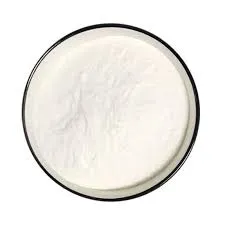
dec. . 24, 2024 03:13 Back to list
hpmc-hydroxypropyl methyl cellulose factory
The Role of HPMC in Modern Industries A Focus on Hydroxypropyl Methyl Cellulose Production
Hydroxypropyl methyl cellulose (HPMC) has emerged as a pivotal ingredient across various industries, including pharmaceuticals, food processing, construction, and cosmetics. Its unique properties, such as water solubility, film-forming ability, and superior thickening capabilities, make it an invaluable compound in both manufacturing and end-use applications. Central to this discussion is the role of the HPMC factory, where this essential polymer is produced, refined, and distributed.
Understanding HPMC
HPMC is a semi-synthetic polymer derived from cellulose, a natural polymer obtained from the cell walls of plants. The modification of cellulose through hydroxypropyl and methyl groups allows HPMC to exhibit a wide range of functional properties. As a non-ionic compound, it is compatible with various substances, making it a versatile additive. It can be found in products ranging from eye drops to paint, showcasing its diverse utility in everyday applications.
Manufacturing Process of HPMC
The production of HPMC involves several key steps that ensure the polymer meets the high standards required by different industries. The primary source of cellulose used in HPMC production usually comes from wood pulp or cotton. Upon acquiring the cellulose, the manufacturing process begins with an alkali treatment followed by etherification, where the cellulose is treated with propylene oxide and methylene chloride.
The reaction results in the substitution of hydroxyl groups in cellulose with hydroxypropyl and methyl groups. The degree of substitution controls the properties of the final product, allowing manufacturers to tailor HPMC for specific applications. Following etherification, the resultant HPMC is purified, dried, and granulated to produce the desired powder form, suitable for various uses.
Applications of HPMC
HPMC's versatility is reflected in its broad range of applications. In the pharmaceutical sector, it serves as a binder and as a controlled-release agent in tablets and capsules. Its ability to form gels at high temperatures is particularly beneficial for pharmaceutical formulations requiring slow dissolution rates.
hpmc-hydroxypropyl methyl cellulose factory

In the food industry, HPMC acts as a thickening agent and stabilizer. It enhances the texture and mouthfeel of various food products, making it a popular choice in sauces, dressings, and ice creams. Additionally, it plays a role in gluten-free baking, providing dough stability and improving overall product quality.
The construction industry also relies heavily on HPMC. It is used in mortar and tile adhesives, enhancing workability and improving water retention, which is crucial for the curing process. HPMC contributes to the optimal performance of construction materials, making them more durable and easier to apply.
In cosmetics and personal care products, HPMC is valued for its film-forming properties, making it a common ingredient in lotions, creams, and hair care products. Its ability to create a moisture-retaining film on the skin and hair contributes to the effectiveness and user experience of these products.
The Future of HPMC Production
As industries continue to evolve, the demand for high-quality HPMC is expected to rise. Manufacturers are responding by investing in advanced production techniques and technologies that increase efficiency and reduce environmental impact. Sustainable practices are becoming more prevalent in HPMC manufacturing, aligning with global movements towards reducing carbon footprints and promoting eco-friendly materials.
Research into new applications for HPMC is also ongoing. Innovations in biocompatible and biodegradable HPMC formulations hold promise, especially in medical applications, such as drug delivery systems and tissue engineering.
Conclusion
The HPMC factory stands as a cornerstone in the supply chain of a multitude of industries. With its extensive applications and the promise of continued innovation, hydroxypropyl methyl cellulose is set to remain an essential ingredient in modern manufacturing. As we look to the future, the commitment to sustainable practices and advanced technologies in HPMC production will further enhance its role in achieving environmentally responsible and high-performance products.
-
tile-bonding-additives-for-stronger-bonds
NewsAug.22,2025
-
construction-grade-rdp-for-wholesale-needs
NewsAug.22,2025
-
trusted-wholesale-hec-partners
NewsAug.22,2025
-
hec-solutions-for-industrial-excellence
NewsAug.22,2025
-
construction-additives-need-hpmc-essentials
NewsAug.22,2025
-
hpmc-versatile-cellulose-ether-for-industries
NewsAug.22,2025







